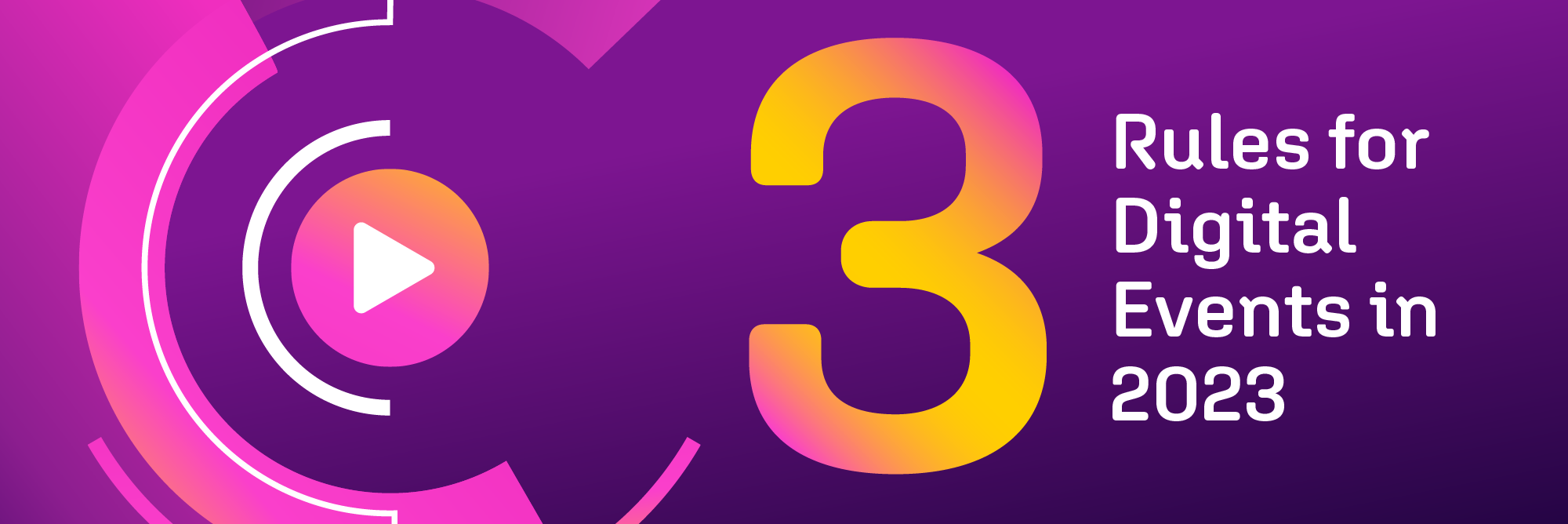
The year was 2001. The dot-com bubble had recently burst, Yahoo! was still the king of the search engines and content marketing was in its infancy. In B2B media companies, print and events reigned supreme while digital media was a tiny experimental part of companies’ marketing plans.
I produced my first webinar in June of that year. I’ve been involved in executing nearly 1,000 more webinars since then. Many things have changed with the medium in the past 22 years — including the progression from dial-in telephone audio, to streaming audio, to webcam video. But one thing that hasn’t changed is the value proposition of a webinar.
Why are webinars still relevant in 2023 when they’ve been around for so long? I think there are three main reasons:
1. Webinars provide the perfect combination of lead generation, branding and thought leadership.
This is the trifecta of a successful webinar. Lead generation allows you to identify the prospect, strong branding gets the person to take your phone call and thought leadership helps you engage with them on a deeper level. Let’s break these down further:
B2B marketers love webinars for their lead generation capabilities. I believe webinars are able to drive high-quality leads because the value exchange between audience members and webinar producers is in balance. Whenever you’re trying to get someone to provide their contact information, you need to give them something of value in exchange — and deep knowledge is powerful. Whenever you have a businessperson providing their contact information and setting aside an hour of their time for a webinar, they must have a strong interest in the topic.
In addition, webinars generally produce higher-value leads than other lead gen tactics (such as white paper downloads) because of the interactivity and analytics connected to a webinar. When someone downloads a white paper, you get their contact info, but little else. You don’t know whether or not the person actually opened the PDF and read the white paper, nor do you get any feedback on the content. But webinars give you data that can (and should) be a powerful tool your sales team uses during follow-up. Your salesperson who receives the lead will know that the attendee was logged onto the webinar for 43 minutes and dropped off midway through the Q&A session. The attendee asked a question about X topic, and she gave the first presenter the highest rating in the post-event survey. All of these data points will help an experienced salesperson develop a customized follow-up that should yield a higher close rate.
But lead generation can only go so far. You want to make sure that webinar registrants have heard of your brand. A webinar provides plenty of pre-event branding for the entire market to see your company’s name and logo. There’s value in all the pre-event promotion that takes place around the event — so even if an individual doesn’t sign up for the webinar, your brand and the topic of the webinar still make an impression.
2. Webinars give the audience valuable content.
Receiving a prospect’s name as a lead and ensuring they know your brand is important, but you’ll convert more leads if you establish your presenters and your company as thought leaders. This is where content comes into the picture. A good title and description will pave the way for a successful event, and a presentation that follows through on the promises you make in the webinar’s marketing will establish you as a thought leader who understands the industry.
Your title and description should focus on what the audience will learn. Skip the self-promotion in this important element and go with an educational tone. Focus on answering the question “Why should an attendee take 45 or 60 minutes out of their day to attend this webinar?” We encourage the use of bullet points in the second portion of the description to help audience members who are skimming the text to quickly glean the key reasons to attend.
In terms of format, there are a lot of great ways to proceed. We like to have a discussion with the webinar sponsor 4-6 weeks in advance of the webinar to decide the best arrangement. A PowerPoint presentation delivered by one subject matter expert from the sponsoring company is still the most popular approach. But recently we’ve seen an increase in other formats, including case studies presented by a customer of the sponsor. Now that webcams are ubiquitous in the business world, interview-style and panel discussion webinars have become more popular too — and they enable greater interactivity between the presenters and a more conversational style.
3. The best webinars focus on delivering value *to* the audience, rather than trying to extract value *from* the audience.
One of the unfortunate side effects of webinars being a tried-and-true B2B marketing tactic is the potential for overuse. Most companies enter the webinar planning process with the best of intentions, but constraints and deadlines take them off the recommended path. Back in 2001, the companies I worked with made their webinar the cornerstone of their marketing plan for the entire year. But today, a webinar is a small part of most companies’ marketing tactics each month or each quarter, so as a result it gets less attention.
It’s very easy for a salesperson or a product expert to (unknowingly) stray from the goal of educating the audience. Often this happens because they’re trying to assemble the title/description or presentation at the last minute. Other times it’s because they’re too close to the product or service their company is selling, and they lose sight of the educational approach that the presentation should take.
We encourage webinar sponsors to include industry research that provides third-party credibility to the presenters’ talking points. Another highly effective tactic is to use feedback directly from customers — such as data on the most common calls to your company’s toll-free support phone number — to shape the presentation.
The Babcox webinar team provides feedback and recommendations to webinar sponsors whose message needs some additional polishing. We encourage the use of interactive elements, such as polling questions, to make the webinar more of a discussion with the audience and less of a soapbox speech. Our team does a technical rehearsal a few days before the live event to ensure each presenter is comfortable with the webinar software, which frees their mind to focus on the content.
Maximize the Opportunity
It’s easier than ever to produce your own webinar. Tools like Zoom and GoToWebinar have brought webinar technology to the masses. However, I believe it’s harder than ever to produce a *great* webinar, because they’ve become so mainstream and commonplace. Make sure you’re carefully planning the details to ensure your event cuts through the noise.
The Babcox team of webinar professionals is always happy to help you brainstorm your next event — with no obligation. Tell us your goals and challenges, and we’ll work with your team to ensure your webinar gets noticed and delivers strong results.

Michael Madej is the Executive Director of Digital for Babcox Media
Anyone who says lightning never strikes twice hasn’t been a part of the webinars Michael has produced. Over the years, he’s witnessed two different webinar presenters’ offices get struck by lightning in the middle of a live event.
Contact Michael at [email protected]

